Quick Answer:
Grow high-value crops like tomatoes, herbs, and leafy greens while saving money through composting, water collection, and smart space use. Start from seeds, reuse containers, and practice companion planting to boost yields naturally. With BC Greenhouse Builders’ expertise and efficient greenhouse designs, you can grow more food, cut costs, and enjoy a sustainable harvest year-round.
With grocery costs climbing, a greenhouse offers a powerful way to take control of your food costs. Growing your own produce means fewer trips to the store and more access to nutritious, homegrown food every season. At BC Greenhouse Builders our decades of expertise help gardeners make the most of their investment with practical, cost-saving solutions for every space.
Grow Your Own High-Value Crops
Some fruits, vegetables, and herbs offer the biggest savings when grown at home. Greenhouses let you grow high-value crops that are expensive at the grocery store but easy to cultivate yourself.
Best Crops to Grow
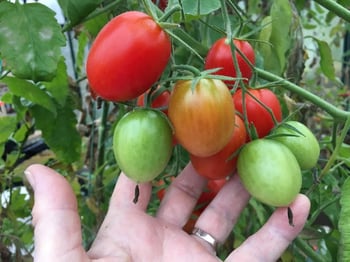
Tomatoes 🍅
High-yield and versatile. Great for sauces, salads, and canning.
.jpg?width=350&name=unnamed%20(7).jpg)
Bell Peppers 🫑
Bright, flavorful, and thrive in greenhouse environments.
.jpg?width=350&name=Romaine%20lettuce%20is%20transplanted%20on%20edge%20of%20arugula%20and%20broccoli%20%20(both%20seeded%20October%2027%20directly%20into%20greenhouse).jpg)
Leafy Greens 🥬
Fast-growing and nutrient-rich; harvest multiple times.
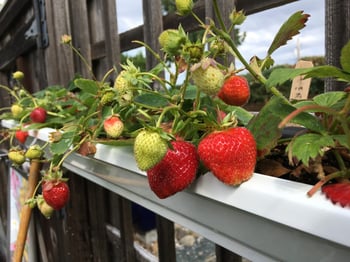
Strawberries 🍓
Enjoy sweet, fresh berries long after the outdoor season ends.
Seasonal Tip: Cool-weather crops like spinach, carrots, and herbs can grow into winter, while warm-season crops like peppers and tomatoes may need extra heat. Use row covers or thermal mass (like water barrels)to extend your season naturally.
Reduce Costs with DIY Solutions
A greenhouse doesn't have to be expensive to maintain. Use simple, creative ideas to stretch your budget without compromising productivity.
Repurpose and Reuse
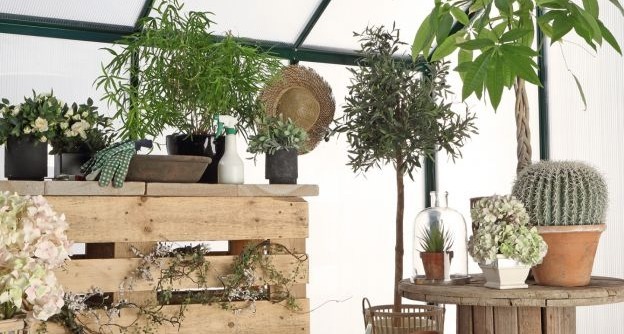
- Turn old buckets, bins, and wooden crates into planters.
- Use pallets for vertical shelving or hanging baskets.
- Repurpose furniture, like bookshelves, for compact growing stations.
DIY Soil and Composting
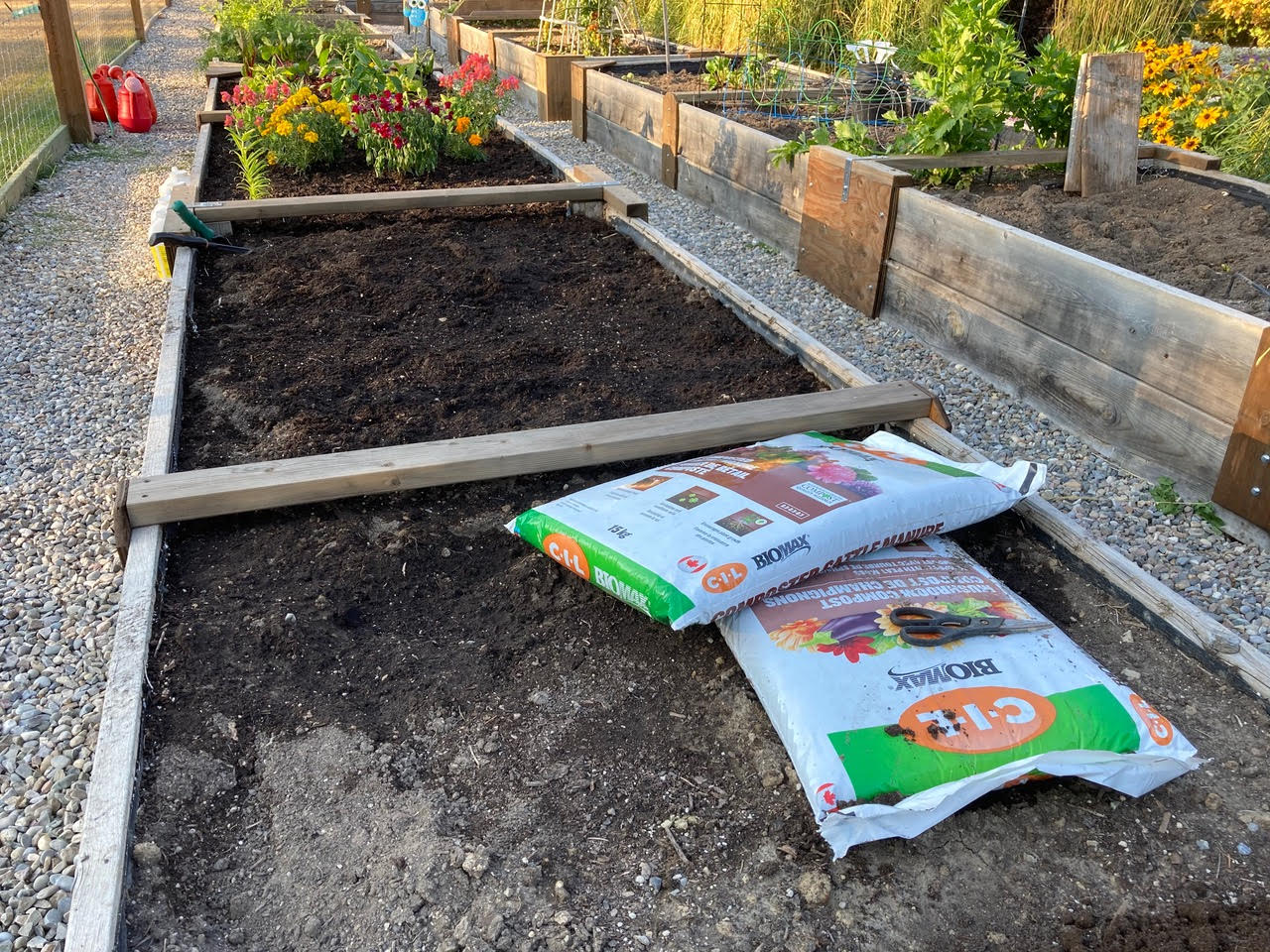
- Make compost from kitchen scraps (veggie peels, coffee, grounds, eggshells).
- Add leaf mulch, aged manure, or grass clippings for rich nutrient-dense soil.
- Try vermicomposting with worms for faster, more balanced soil production.
Water Conservation
- Collect rainwater in barrels and use it for irrigation.
- Add drip systems or soaker hoses for targeted watering.
- Mulch soil surfaces to retain moisture and reduce watering frequency.
Save Money by Starting from Seed
Buying seedlings adds up quickly. Starting from seed saves money and lets you grow unique varieties.

Benefits of Starting from Seed
- Seeds cost far less than nursery plants.
- Grow heirloom or specialty varieties not found in stores.
- Control germination and soil health for stronger plants.
Seed Saving and Swaps:
- Collect seeds from your healthiest plants to replant next season.
- Join local or online seed swaps to find rare varieties for free.
- Build resilience in your crops by reusing seeds adapted to your own conditions.
Maximize Your Space and Yield
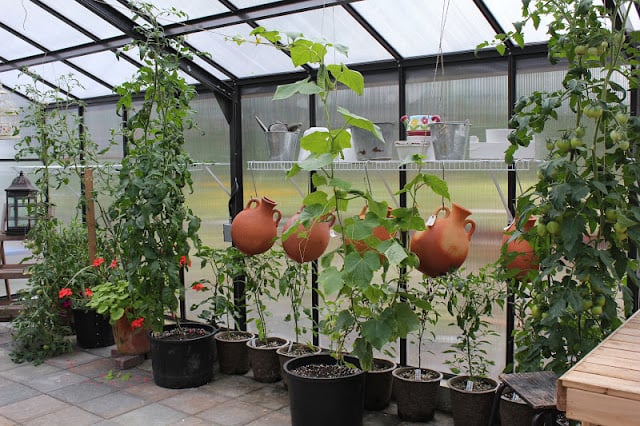
Making the most of your space helps increase your harvest. Getting creative with space is a must!
Vertical Growing
- Install trellises, hanging baskets, or tiered shelves to grow upward.
- Great for vining crops like beans, peas, and cucumbers.
Companion Planting
Pair plants that help each other thrive and deter pests:
- Carrots & Onions: Onions help repel carrot flies.
- Peppers & Basil: Basil improves growth and repels thrips.
- Lettuce & Chives: Chives deter aphids and boost flavor.
- Strawberries & Spinach: Complementary growth helps suppress weeds.
Crops Rotation
Switch crops each season to balance nutrients and prevent soil disease. For example, follow heavy feeders like tomatoes with light crops such as leafy greens.
Extend Your Growing Season Naturally
If you want to grow year-round, glazing and heating make a big different.
Choosing the Right Glazing: Use BC Greenhouse Builders' exclusive Fivewall polycarbonate or double glass glazing to retain heat and cut energy use. These materials stabilize temperatures and lower long-term costs.
2025 Greenhouse Design Tip: 27% of BC Greenhouse orders so far in 2025 have double glass or fivewall polycarbonate (or a combination of both) to give them the ultimate insulation combo.
Passive Solar Heating:
- Place dark-colored water barrels to absorb daytime heat and release it overnight.
- In colder areas, pair passive systems with a heater for added warmth.

Why Budget-Friendly Gardening Works
Investing in a greenhouse is investing in long-term sustainability. With smart planning and a few creative strategies, you can lower costs, grow more food, and enjoy fresh produce year-round.
Whether you are starting small or planning for the long haul, BC Greenhouses are designed to help you grow smarter. BC Greenhouse Builders' Economy Greenhouse Models make it easier to start affordably (starting at $4,495) and reduce ongoing costs, while BC Greenhouse Value Model Greenhouses offer long-term efficiency with low maintenance and energy-saving designs. Both help you grow more of what you love while keeping expenses down—so every season, your greenhouse continues to give back.



